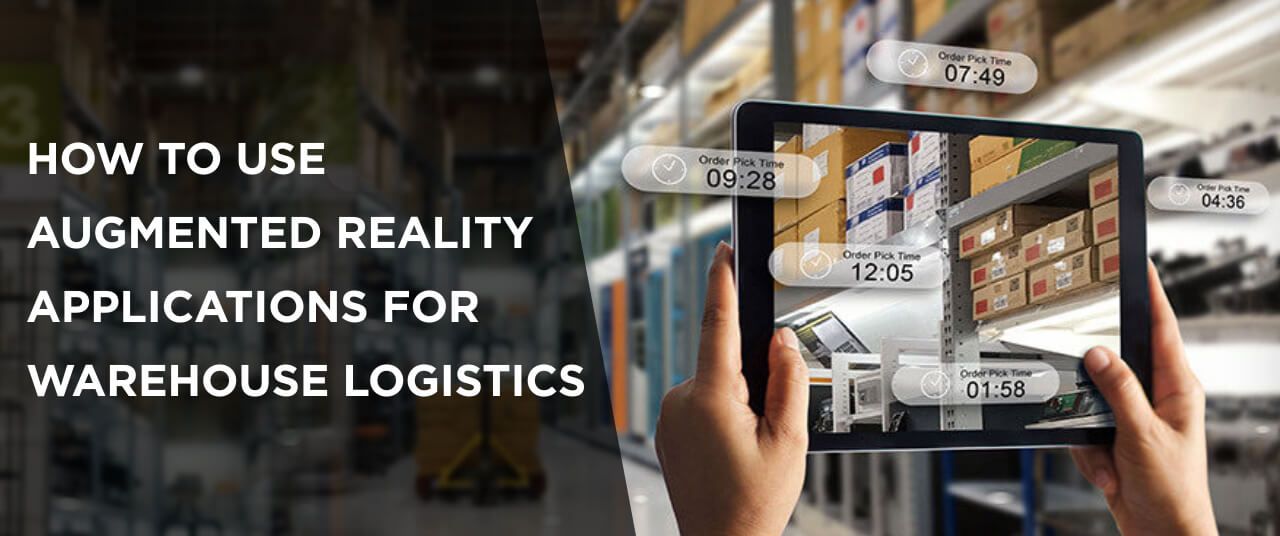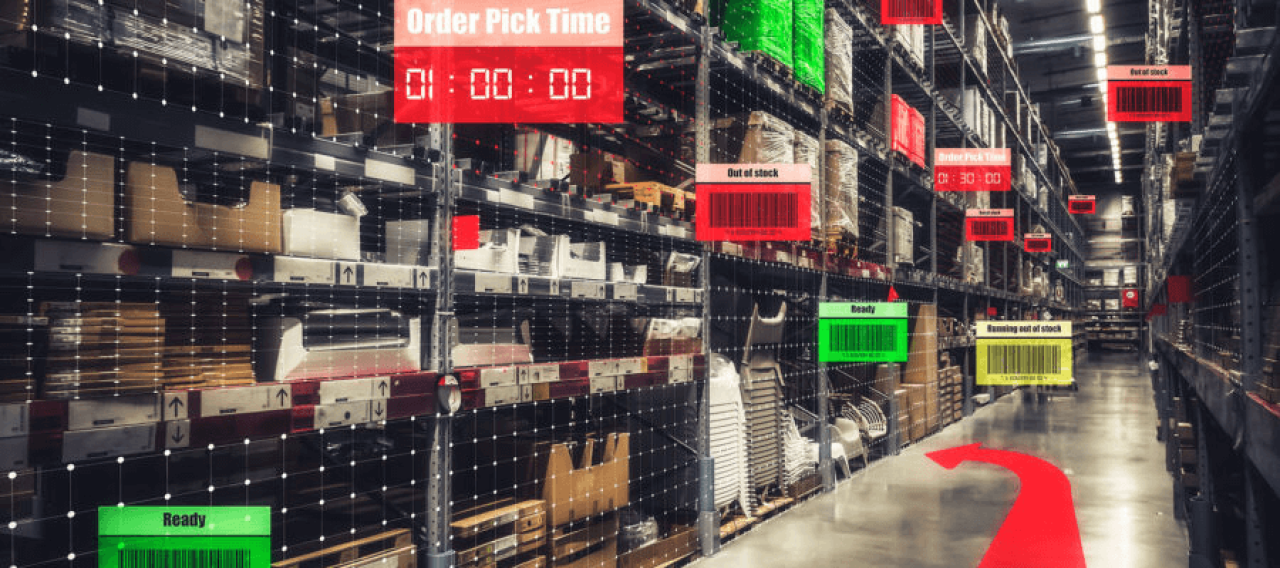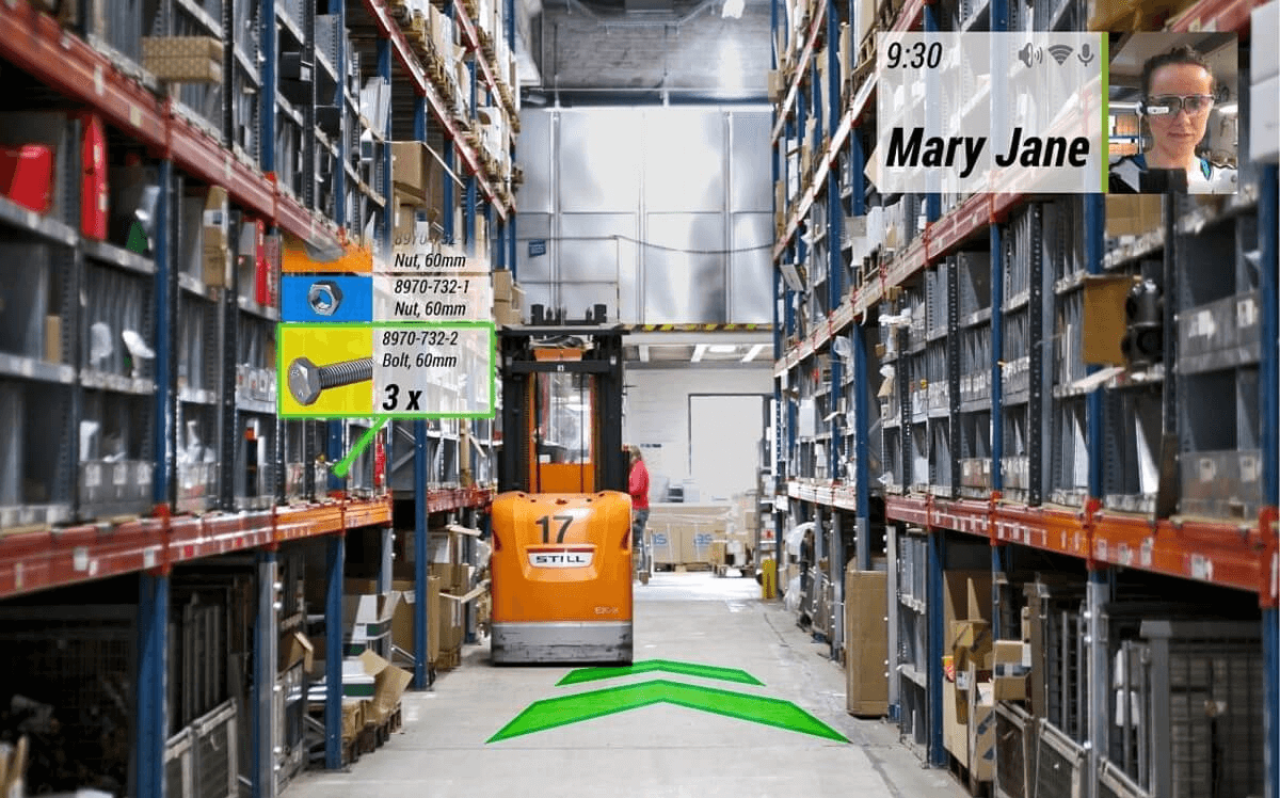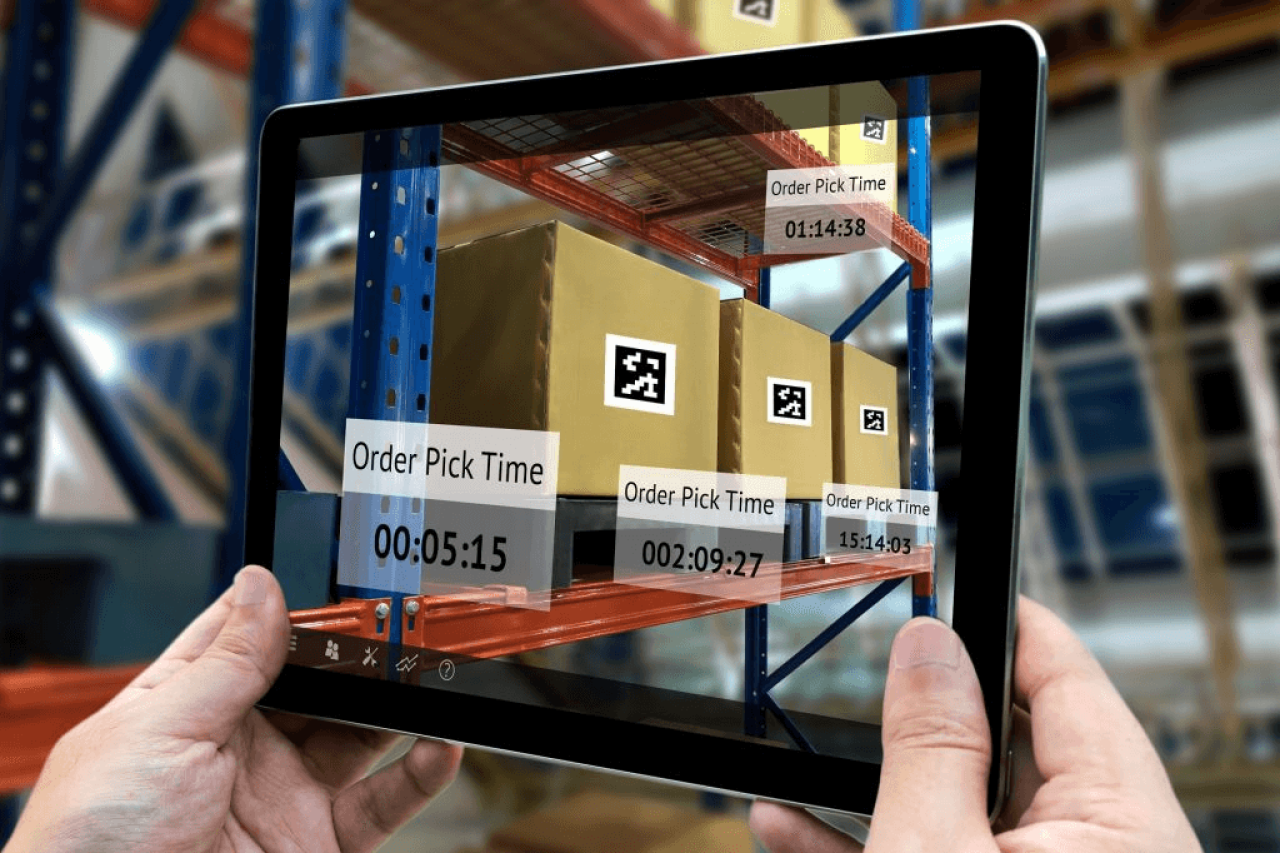How to Use Augmented Reality Applications for Warehouse Logistics?

Today, warehouses are not only product storage and shipping hubs. They also offer additional services varying from order compilation to product labeling, repacking, and repair.
DHL research shows that warehousing operations account for about 20% of all logistics costs. And the picking process accounts for 55-65% of the total warehousing costs.
Further, as the process is still heavily manual, it is slow and error-prone. And picking work is often undertaken by temporary employees. That requires extra effort to train new arrivals.
If you aim to make the picking process as cost-effective, fast, and error-free as possible, then an augmented reality app is the key. For example, stats show that constant picking validation can decrease errors by as much as 40%.
In this article, you will find out how to increase order processing and improve warehouse safety by developing augmented reality applications for warehouse logistics. We will also discuss the issues of device choice, AR training, and the integration of AR applications with your in-house systems.
Here’s What We’ll Cover
How does AR help logistics industry?
Below are some benefits companies in the warehouse logistics field gain by implementing augmented reality applications.
- Enhancing employee training experiences. The AR approach helps employees hit the ground running in their new positions. Also, it excels at training several people simultaneously.
- Streamlining warehouse upgrades. AR glasses help clients envision finished buildings before construction begins. AR also allows people to plan equipment layouts and traffic flows.
- Improving productivity and accuracy. AR solutions provide a hands-free method of picking. In this way, employees can see guidance about where to go to retrieve particular items.
- Minimizing downtime. AR complements the smart sensors approach by making it easier for technicians to diagnose and fix problems.
- Automation of paper-based processes. The automation of paperwork boosts your productivity. You receive instant access to a company’s database, save time, and ensure that your data is safe and easily accessible.
- Effective warehouse management. Since all the data will be in a database, it is easier to store goods and check the inventory.
How AR Improves the Order Picking Process
You already know that item location and picking account for about 60% of warehouse operations. Now, let’s discover how using an augmented reality headset will accelerate your employees’ work and reduce warehousing costs by at least 25%.
Navigation
AR navigation is better suited for large and medium-sized warehouses, where employees move around by warehouse vehicles. Further, it speeds up the work of new employees, who are not yet familiar with the warehouse.
In a nutshell, AR navigation works as follows:
- Using smart devices, employees open a list of the items. Then the software analyzes the list, compares it to the up-to-date warehouse layout data, and creates the most convenient route for collecting all items.
- Once the route is created, an employee receives instructions in the form of pointing arrows that appear as a virtual layer on the screen.

Items Location
The augmented reality app contains data on the layout of the warehouse and the placement of goods. First, you should load the list of items from the in-house systems. Next, the application analyzes the item code group in the list. Then, it points to the locations where the items of the code group are stored. Once an employee picks an item, the app reads the item barcode to verify it to minimize mistakes.
Note, this feature is suitable not only for large but also small warehouses.

Barcode Reading
Using the barcode scanner feature, you can turn even the most basic smart device into a barcode scanner. Employees scan full shelves of products to effortlessly find, track, and decode several barcodes at once with a single tap on their device. The AR app generates overlays right on the smart device screen that show the locations of the desired items. This enables warehouse staff to fulfill orders quickly.

Synchronization of Item Data
After scanning an item’s barcode, the app communicates with the integrated systems to receive details of the item. Thus, the data is always complete, up-to-date, and accurate. This feature is also ideal for warehouse audits and the preparation of orders for shipping docks.
Companies Investing in Augmented Reality Applications for Warehouse Logistics
DHL’s Experience Implementing Augmented Reality in Warehouse
Picking orders occupy about 60% of all DHL warehousing operations. Thus, to optimize the process of collecting orders, DHL launched a pilot AR project to collect orders.
Evaluation of the AR pilot project results showed an increase in the efficiency of the picking process by 25%. Also, the use of augmented reality allowed DHL to reduce the time for employee training by 50%.
After a pilot testing of this augmented reality platform, DHL launched a global implementation of AR vision picking technology in their warehouse processes.
Precise Vision Picking at Coca-Cola Hellenic Bottling Company
To improve picking quality and pallet packing accuracy in the warehouse, Coca-Cola Hellenic Bottling Company (HBC) decided to adopt smart glasses and AR solutions.
After two months, the picking performance increased by approximately 6-8% – aiming to reach 100% accuracy.
GE Uses AR Technology to Improve Vision Picking
The GE Healthcare warehouse workers are using AR systems to kit and complete pick list orders up to 46% faster. The AR system receives real-time information on item location by connecting to the warehouse systems. Then it instantly provides workers with clear instructions on each item’s location.
Considerations in Augmented Reality for Logistics
A Handheld Device or Smart Glasses: Which Solution Will Suit Your Company?
Primarily, AR apps for warehouse logistics are delivered via smart glasses or mobile phones. Both options have their advantages and drawbacks.
- AR smart glasses. Smart glasses offer warehouse specialists a hands-free experience. They enable the technician to view and interact with video and digital content.
- Mobile phones. Your warehouse staff installs the developed app on their smartphones or tablets. The AR development for handheld devices is less expensive than that for smart glasses.
| Criteria | Smart glasses | Mobile device |
| Hamds free | Full | Limited |
| Field of view | Limited | Unobstructed |
| Mobility | Low. Requires unpacking and packing. Sensitive. | High. Piece of common equipment kit |
| Battery life | Short | Longer lifespan |
| Connectivity requirements | Uninterrupted, high bandwidth | Lower bandwidth or interrupted coverage |
| Communication | Limited | Natural |
| AR option | 3D | 2D |
| Maturity | Immature, less stable | Mature, in wide use |
| Price | High | Affordable |
But the choice of device is up to you. Before deciding, carefully consider the advantages and disadvantages of the two options. You can also ask augmented reality vendors for advice and discuss the cost and user experience differences in detail.
AR Training
But note, you must integrate the map of your warehouse in the app’s core and enhance it with the data about item placement.
Further, your AR development team should ensure that the app recognizes all your warehousing codes quickly and correctly. Moreover, you must continually update the data on new item placement, new barcodes, or the altered warehouse layout.
Does your Logistics Company Need to Renew the Workflow and Software to Implement AR?
Note, AR devices require a specific application built by a software development company. The AR app seamlessly integrates with your in-house systems such as WMS, CRM, ERP, etc. As a result, your warehouse employees can download and upload essential data like item lists or customer information. And all your company’s departments will have access to up-to-date warehouse-related information.
So, you will enhance the picking process, save time, and eliminate errors.
Want to Streamline your Logistic Processes with an AR Application?
Want to learn more about how warehouse AR apps can improve your business processes? Then don’t hesitate to call or message us today. Our team can offer the expertise and insights you need to understand how AR can improve your warehouse management processes and find the optimal solution for your needs.




